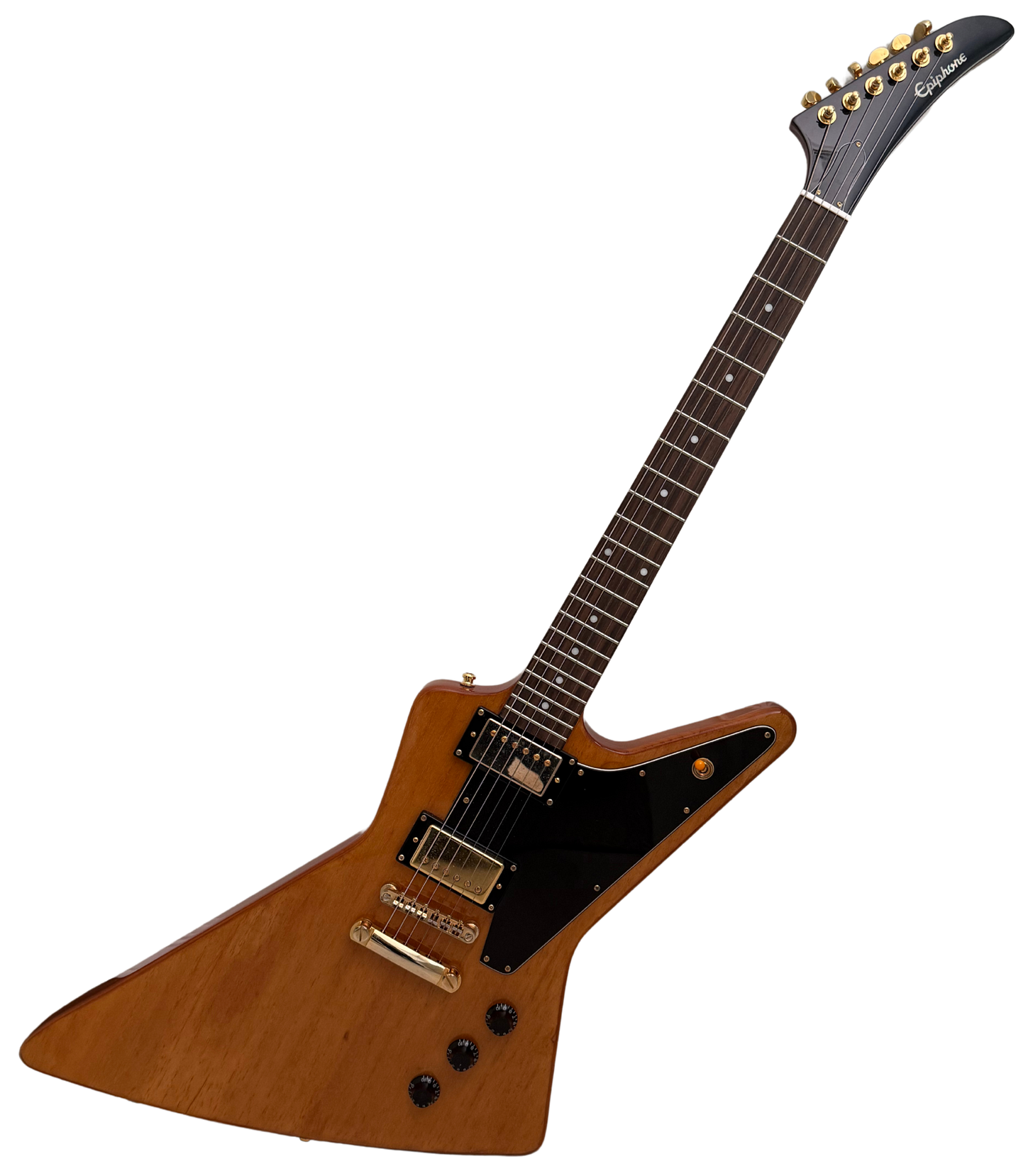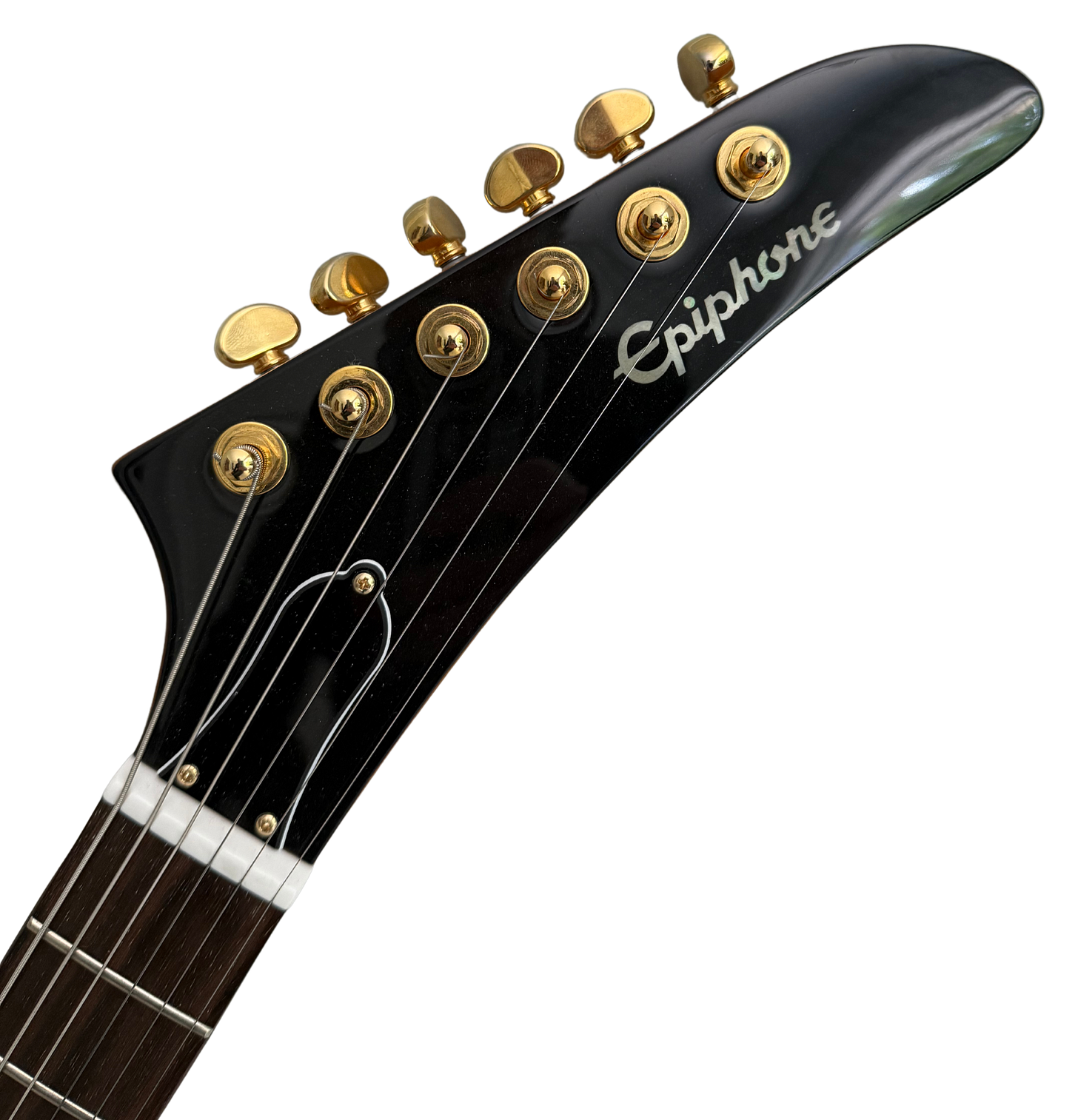Epiphone 58 Korina Explorer
In the mid-1950s Gibson president Ted McCarty was pushing for a line of modern looking guitars to compete with the newly designed, and highly successful, Fender Stratocaster. Futuristic designs were the latest craze at that time. Just look at the tail fins on American made cars from 1957 - 1959 !
Gibson designers went to work on prototypes for 3 new models in 1957. These futuristic guitar designs were the Flying V, the Futura and the Moderne. All 3 debuted at the NAMM show that year. Based on the feedback Gibson received during the show, only the Flying V and the Futura, which was now rebranded the Explorer, were placed into production in 1958. The Moderne was paused, then later released in 1982.
Prototype versions of the Explorer were made of mahogany but were soon abandoned because they were extremely heavy. Gibson eventually used the wood of the limba tree, which they marketed as "korina" (a term they invented). The wood is lighter in color and weighs less than mahogany. It’s tonal characteristics are very similar to mahogany
The initial run of the Explorer wasn’t very successful, and the model was discontinued by 1963. In 1976, Gibson began reissuing the guitar after competitor Hamer had success with similar designs. The 70’s made Explorers became especially popular among the hard rock and heavy metal guitarists through the 80’s.
The original 1958–1959 Gibson Korina Explorer has since become one of the most valuable production-model guitars ever produced, Only 22 were shipped in its first two years, 19 in 1958 and 3 in 1959; an unknown (small) number of leftover bodies were completed with nickel 1960s hardware and sold in 1963. 38 examples were known to exist as of 2011. A 1958 Gibson Korina Explorer sold for $1.1 million in 2016. This particular guitar was also the most expensive in the world at the time of the sale according to Ultimate Guitar.
The Gibson Custom Shop has reissued the 58 Korina Explorers in limited numbers over the years and while they are nowhere near as expensive as an original they’re still a lot of money for the average guitarist.
I’ve always wanted one and was really excited when Epiphone started making their version of this iconic guitar in the late 90’s.
I found one made in 1999 used online for a reasonable price. The body is constructed of several pieces of Korina topped with a thin veneer for appearance on the front and the back. It has a maple neck with a thick rosewood fretboard, 22 medium jumbo frets. 2 volume controls, one master volume and a 3 way toggle switch on the lower treble horn. It came with Epiphone humbuckers which I quickly changed out for a Gibson Burstbucker 2 in the neck position and a Seymour Duncan JB in the bridge position. Stock Epiphone pickups weren’t great in the late 90’s.
Epiphone still makes the 58 Korina Explorer today, however the specs have changed. The newer version is made in China vs. Korea and they come with a higher price point. About 2 times what you can find an early one for on the used market. The latest version does come stock with Burstbuckers in both positions which is nice. They also have a solid Korina two-piece body with no veneer and fretboard made of Indian laurel instead of rosewood.
I decided to look for an earlier one because of the rosewood fretboard and price difference.
When I first played the Explorer, I was immediately surprised by how balanced and light it is considering its size. The neck has a full, oval shape and is very playable with great upper fret access. Unplugged the guitar is resonant with good sustain with clear mid range tones.
Plug it in and turn the volume up and this baby screams. It’s a hard rock and metal machine. The upgraded pickups definitely help. Burstbuckers are a good match for this guitar and I’m really happy with the Duncan JB I added to the bridge position.
If you’re looking for an Explorer type guitar, this is an excellent choice and still a real bargain on the used market.




